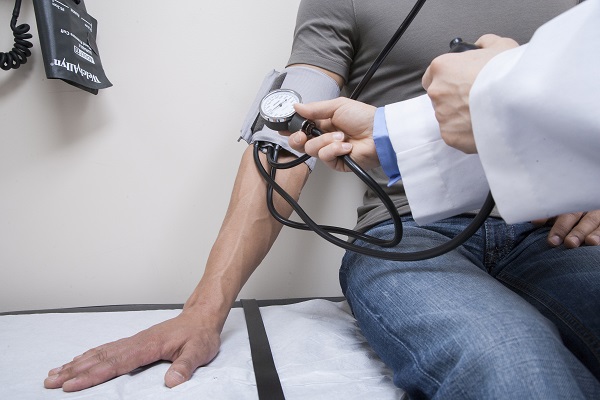‘Vital Signs’ – have you have heard of your doctor talking about this or using this term?
One of the first things I learned as a medical student was to assess the vital signs. This is because they bear prime importance when it comes to managing patients.
Doctors often receive phone calls from patients regarding their health. It becomes quite helpful to the doctor if the vital signs of the patient are discussed.
Vital signs are measurements of body temperature, heart rate, breathing rate and blood pressure. Any significant change in these signs can point towards an underlying medical problem. They are particularly useful if you are sick.
Let’s take a look at what the vital signs of the human body are and how important they are when it comes to managing your health.
What Are Vital Signs?
Vital signs are measurements of certain basic parameters of human health. These include body temperature, the rate of breathing, heart rate and blood pressure.
These are the first things that are looked at by doctors when they see that patients. It is because these vital signs offer a significant amount of information regarding an individual’s health even before a full clinical examination has been performed.
In other words, they are ‘clues’.
Body Temperature
Checking your body temperature is extremely important if you have an illness. It is checked using a thermometer. The normal human body temperature lies between 97°F to 98.6°F (36°C to 37°C).
Before you jump to conclusions regarding an individual’s body temperature, it is important to understand certain points.
- Body temperature can change at various times of the day. It is normally lower in the morning and slightly higher in the evenings.
- Body temperature can vary if an individual is stressed or dehydrated.
- Sitting out in the cold or drinking hot or cold liquids can also affect the body temperature.
- People with certain medical problems can have varying body temperature. This is particularly important if the thyroid disease is uncontrolled.
- Menstrual cycles can also change body temperature.
- If you have an underlying infection such as a viral fever or a bacterial illness, your body temperature is a vital sign that can either rise or fall. It is more common to have a fever i.e. a high temperature during an infection but some older individuals may drop their body temperature and suffer from a condition called hypothermia.
- Body temperature can vary after exercise.
The temperature of the human body is regulated by a small part of the brain called the hypothalamus. As we get older, temperature regulation can falter.
For example, elderly individuals who venture out into hot climates can experience an increase in the body temperature. Some can even have an infection without having a fever.
Thermometers are of different kinds and the common ones that are used are the mouth thermometers, armpit thermometers and forehead thermometers.

In infants, a rectal thermometer is used. Values can vary depending on where the thermometer is checking the body temperature. For example, if an armpit thermometer is used, adding 1°F to the value obtained would give the right reading.
The Difference Between Feeling Feverish And Having A Fever
Very often I encounter patients who tell me that they have been ‘feeling feverish’.However, when the temperature has been checked in the clinic, it is normal.
There is a big difference between feeling feverish and actually suffering a fever. Feeling feverish can relate to surroundings rather than an actual increase in the body temperature.
It is strongly recommended that those individuals who feel feverish checked the body temperature to see if they really have a fever. This way they can seek medical attention sooner rather than later.
You can check out a selection of thermometers here – Click here
Heart Rate
Your heart rate is the number of times your heart beats in a minute. The rate at which the heart beats can be easily calculated by feeling the pulse. Usually, doctors feel the pulse at the outer aspect of the wrist. Some people feel it in the neck.
The normal heart rate lies between 60 – 100 beats per minute. A rate below 60 bpm per minute is termed bradycardia and a rate above 100 beats per minute is called tachycardia.

There are a number of conditions were the pulse rate can vary.
These include active infections, anxiety, stress, exercise, thyroid problems, low haemoglobin, heart problems and certain medications. In fact, even a strong cup of coffee in the morning can increase your heart rate!
But it is not just the rate at which the heart beats that is important. The rhythm also matters quite a bit.
If you were to feel your pulse, you will find that it beats at a very regular rhythm.
However, there are certain conditions with the heart can be rather irregularly. This is of great clinical importance as an irregular heartbeat could indicate an underlying heart problem or medical problem.
The force with which the heart beats is also important. While this is something that can be difficult for people to check at home, doctors usually feel this when they feel the pulse.
In patients who have significant infections, the force with which the pulse hits their finger can reduce quite a bit. This is often a marker of a low blood pressure or heart efficiency.
If you have been feeling breathless or have been experiencing palpitations i.e. something thumping in the chest, then make sure you feel your pulse and count how many times it beats in a minute.
This is extremely useful information when you speak to the doctor over the phone or in the clinic. There are many people who feel that their heart is beating very hard but find that their pulse rate is within the normal range.
These days, blood pressure checking machines and pulse oximeters can check heart rate quite well.
There are a number of different apps available on smart phones that can also check the pulse rate. Devices such as heart rate monitors are readily available that track your heart beat continuously during rest and exercise.
Check out a selection of heart rate monitors here – Click here
Breathing Rate
As suggested by the term itself, breathing rate refers to the number of times one breathes in a minute. In the medical world, it is called respiratory rate.
How fast we breathe depends on a number of different factors. For example, when we sleep, our breathing rate is extremely slow. When we exercise, our breathing rate increases.
The normal breathing rate lies between 12 to 20 breaths per minute.
Factors that increase or altered breathing rates include exercise, anxiety, anger, laughter, chest infections and certain surgeries. The use of certain medications can also change breathing rate. Overdose of opiate drugs can reduce breathing rate significantly.
If you see someone who is breathing at a rate of more than 25 to 20 breaths per minute at rest for no other obvious reason, it is usually indicative of an underlying health problem.
I recently saw a gentleman who had returned from the United States having enjoyed a holiday with his family that. Upon return, he developed breathing difficulty and found that he was getting breathless on very minimal exertion.
After examining and performing certain investigations, he was diagnosed to have a blood clot sitting in the blood vessels of his lungs. This is a serious condition called pulmonary embolism and required emergency management in hospital.
It is therefore very important for you to keep an eye on how fast you or your loved one is breathing at when they are ill. It can provide vital information to the doctor regarding the patient’s health.
Blood Pressure
The human blood pressure is an important vital sign that is monitored by almost everyone when they are ill. Fortunately, it is extremely easy to measure blood pressure these days as numerous digital blood pressure monitors are now available that are extremely affordable.

The normal human blood pressure lies between 120/80 mmHg to 140/ 90 mmHg. A sustained blood pressure beyond this value is called hypertension. A value a lot lower than this range is called hypotension.
Both the high and very low blood pressure are extremely important made comes to managing your health. High blood pressure is a well known risk factor in the development of heart disease and stroke. Over a period of time, it can also affect the kidneys and the eyes as well.
Similarly, a low blood pressure can lead to under-perfusion of all vital organs in the body. This means that when the blood pressure is low, the organs in the body do not receive sufficient amount of blood for normal functioning.
Over a period of time, very low blood pressure can cause significant health problems.
That being said, there are many people walking around with a low blood pressure that is normal for them. Those who have a naturally low blood pressure need not worry as the body is used to this and the vital organs will be getting enough blood required for normal functioning.
I am not going to go into too much detail regarding management of blood pressure here as it is a very vast topic and a discussion regarding it would be out of the scope of this article.
But I would advise remembering the normal values, especially if you are not taking any medication whatsoever. Those who have diabetes and kidney disease need to maintain that blood pressure at different values compared to those who have heart disease and those who have no disease at all.
Ask your doctor for more information regarding what your normal blood pressure should be.
Check out a selection of blood pressure machines here – Click here
Oxygen Levels
I am not going to discuss this in detail as checking oxygen levels requires owning of a pulse oximeter. It is a vital sign but is not really something that has to be measured at home as an emergency (unless your doctor has asked you to).
Not everybody has this at home and neither is it a device I would recommend for everyone to keep. However, if there is someone who suffers from asthma or lung disease at home, having a pulse oximeter can help provide vital information about blood oxygen levels.
This way, the doctor can guide the patient regarding treatment especially if they are breathless and have low oxygen levels.
Closing Remarks
Vital signs are ‘vital’ in the management of patients. When speaking to your doctor, attempt to check these vital signs. It could help speed up treatment if this information is available sooner rather than later.
- Understanding Iron Deficiency Anemia: A Guide for Patients - May 31, 2025
- CT Coronary Calcium Score: A Guide for Patients - January 7, 2024
- Gastric Antral Vascular Ectasia (GAVE) – Causes, Diagnosis, and Treatment - August 5, 2023


Thanks for these tips Doc!
I remember you’d mentioned a bit of these on the radio as well.